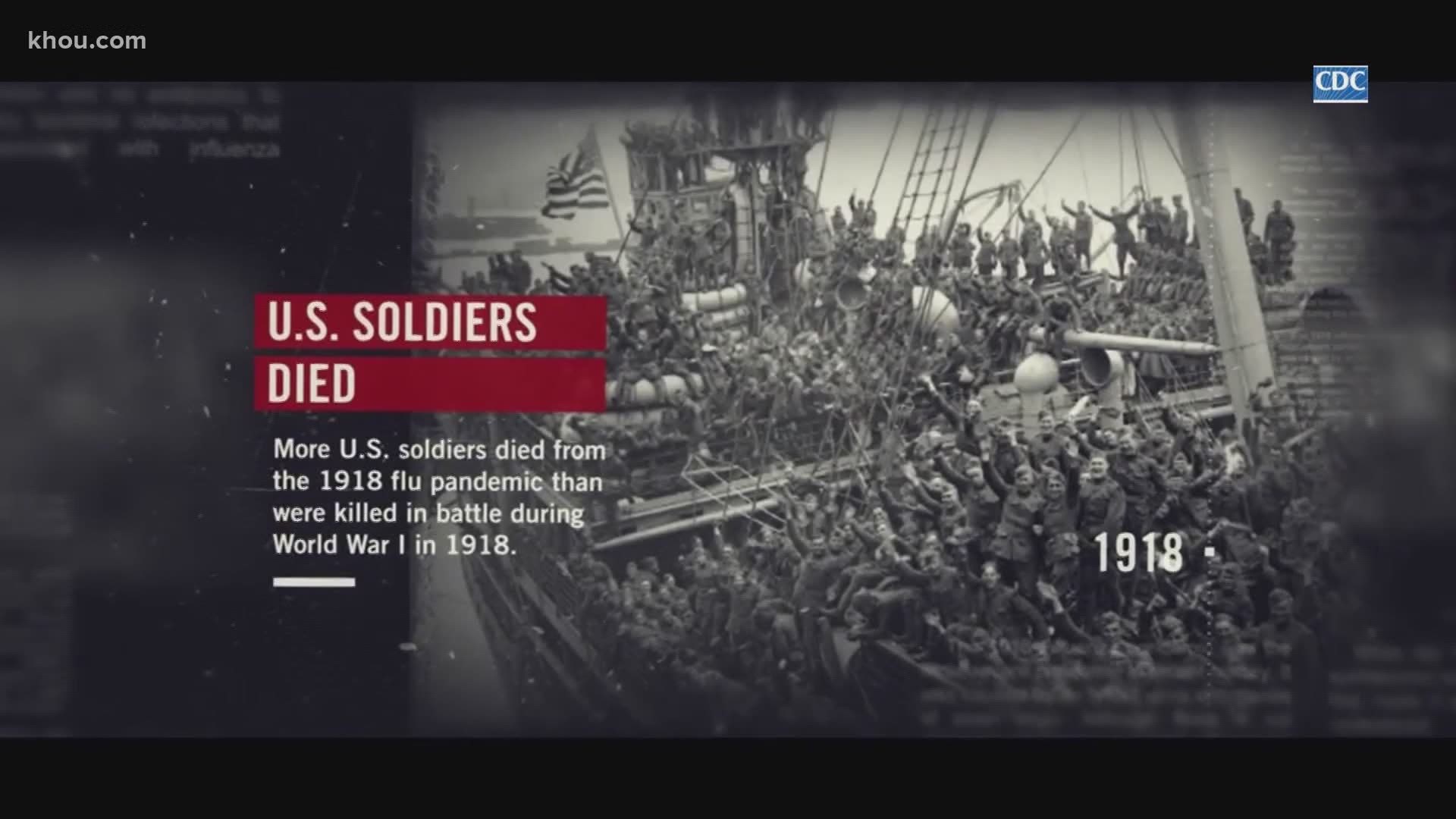HOUSTON — As stores reopen and more people fill the streets, there’s still an important call for social distancing.
“If we have a second spike of this virus, everything is going to have to shut back down,” said Harris County Judge Lina Hidalgo.
If we look back at history, we can see how deadly a second wave can be.
“The Spanish Flu is the reference point," said Helen Valier, associate director for the Medicine and Society Program at University of Houston's Honors College.
She studies the outbreak that started in 1918.
“The second wave really did coincide with troops moving back into the us in particular from Europe," Valier said.
World War I was ending, and as things like shipping and railroads expanded, so did the virus. It was during the summer months, a time when it was expected to go away.
“When you have a second wave, people are tired already of the social distancing, people are tired of wearing masks,” she said.
In the end, the numbers were staggering. One-third of the world’s population were infected, and the death toll was 50 million. It’s who died that was surprising.
“The second wave affected people who were in their 20s and 30s more severely,” she said. “That had a enormous economic impact, because you are taking out the most productive members of your population.”
They are communities that faced the same difficult decisions our generation is now.
“The difference between death rates really was whether local politicians, mayors, public health officials could get people to do social distancing," Valier said.
It's a lesson from history to take it seriously and remember we’re not alone.
Coronavirus symptoms
The symptoms of coronavirus can be similar to the flu or a bad cold. Symptoms include a fever, cough and shortness of breath, according to the Centers for Disease Control. Some patients also have nausea, body aches, headaches and stomach issues. Losing your sense of taste and/or smell can also be an early warning sign.
Most healthy people will have mild symptoms. A study of more than 72,000 patients by the Centers for Disease Control in China showed 80 percent of the cases there were mild.
But infections can cause pneumonia, severe acute respiratory syndrome, kidney failure and even death, according to the World Health Organization. Older people with underlying health conditions are most at risk for becoming seriously ill. However, U.S. experts are seeing a significant number of younger people being hospitalized, including some in ICU.
The CDC believes symptoms may appear anywhere from two to 14 days after being exposed.
Human coronaviruses are usually spread through...
- The air by coughing or sneezing
- Close personal contact, such as touching or shaking hands
- Touching an object or surface with the virus on it, then touching your mouth, nose or eyes before washing your hands.
Help stop the spread of coronavirus
- Stay home when you are sick.
- Eat and sleep separately from your family members
- Use different utensils and dishes
- Cover your cough or sneeze with your arm, not your hand.
- If you use a tissue, throw it in the trash.
- Follow social distancing
Lower your risk
- Wash your hands often with soap and water for at least 20 seconds. If soap and water are not available, use an alcohol-based hand sanitizer.
- Avoid touching your eyes, nose, and mouth with unwashed hands.
- Avoid close contact with people who are sick.
- Clean and disinfect frequently touched objects and surfaces.
- If you are 60 or over and have an underlying health condition such as cardiovascular disease, diabetes or respiratory illnesses like asthma or COPD, the World Health Organization advises you to try to avoid crowds or places where you might interact with people who are sick.
Get complete coverage of the coronavirus by texting 'FACTS' to 713-526-1111.

